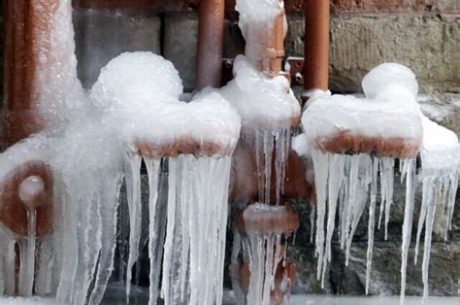Monsoon season in Utah brings a mixture of relief and excitement as it ushers in a break from the scorching summer heat. However, with this relief comes the potential for heavy rainfall, flash floods, and even landslides. To ensure your home remains safe and secure during the monsoon season, it’s crucial to take proactive steps to prepare and protect your property. In this comprehensive guide, we’ll walk you through what the Monsoon season entails, the essential tips and strategies to safeguard your home, property, and loved ones during this season in Utah.
The monsoon season in Utah is characterized by a sudden shift in weather patterns, marked by heavy rains, thunderstorms, and increased humidity. While it might seem counter-intuitive in the desert-like landscape of Utah, monsoon conditions are driven by the seasonal shift in wind patterns and the influx of moist air from the Gulf of California and the Gulf of Mexico. This influx of moisture can result in intense rainstorms that overwhelm the typically dry terrain.
–
Monsoons in Utah typically occur between July and September, bringing intense bursts of rainfall and sudden weather changes. These leads to moisture-rich air masses colliding with Utah’s mountainous terrain, leading to thunderstorms, heavy rainfall, and the potential for flash floods and landslides.
As the Monsoon season creeps in, there are a few possible dangers citizens of Utah must be aware of.
- Flash Floods: A Silent Threat – Flash floods are among the most dangerous consequences of Utah’s monsoon season. Due to the lack of vegetation and the hard-packed soil in many desert areas, the ground is unable to absorb water quickly. This leads to rapid runoff, often transforming dry riverbeds into raging torrents within minutes. Flash floods can occur even many miles away from the actual rainfall, catching hikers, campers, and motorists off guard.
- Landslides and Mudflows – The increased moisture during monsoon season also makes the soil more susceptible to landslides and mudflows. In areas with steep slopes or loose soil, heavy rainfall can trigger the collapse of hillsides, posing a risk to homes, roads, and infrastructure. Travelers and residents must be cautious when navigating hilly or mountainous regions during monsoon season, as roads can become unstable and prone to sudden landslides.
- Wildfire Concerns – Paradoxically, while monsoon rains bring much-needed moisture to Utah’s dry landscape, they can also heighten the risk of wildfires. The initial heavy rains can lead to the growth of vegetation, but as the season progresses and the moisture diminishes, the lush growth dries out, creating ample fuel for potential fires. Lightning strikes during thunderstorms can further exacerbate the fire risk, underscoring the need for heightened vigilance during the monsoon season.
- Road Safety and Infrastructure Impact – Utah’s infrastructure, including roads and bridges, can be severely affected during the monsoon season. Flash floods and landslides can wash away roadways, bridges, and culverts, disrupting travel routes and posing significant safety risks for motorists. It is not uncommon for roads to be closed due to flooding, leaving travelers stranded or rerouted through less familiar, potentially hazardous terrain.
With the dangers that Monsoons can cause, a little preparation can go a long way in safeguarding your home during the season. Here are some key steps to take:
- Cleaning and Clearing Gutters and Drainage Systems: Ensure your gutters and downspouts are free of debris, allowing rainwater to flow freely. Clogged gutters can lead to overflowing water that can seep into your home’s foundation.
- Inspecting and Maintaining Roofs and Windows: Inspect your roof for any loose or damaged shingles, as heavy rain and wind can worsen existing issues. Check windows and doors for leaks, and ensure they are properly sealed to prevent water infiltration.
- Checking the Foundation and Sealing Vulnerable Areas: Examine your home’s foundation for cracks or weak points that could allow water to seep in. Seal any gaps or cracks with appropriate materials to prevent water intrusion.
- Securing Outdoor Furniture and Belongings: Move outdoor furniture, potted plants, and other belongings indoors or to a secure area. Flying debris during strong winds can damage your property or pose a safety hazard.
- Creating Proper Drainage: Ensure that your property’s grading directs water away from your home’s foundation. Consider installing French drains or swales to channel excess water away from your property.
- Installing Flood Barriers and Sandbags: For homes located in flood-prone areas, consider using flood barriers and sandbags to divert water away from your home’s entrance and vulnerable areas.
- Elevating Electrical Systems and Appliances: Elevate electrical systems, such as outlets and circuit breakers, above the expected flood level. If possible, raise appliances like water heaters and HVAC units onto platforms to prevent water damage.
- Keeping Emergency Supplies Ready: Assemble an emergency kit that includes essentials like bottled water, non-perishable food, flashlights, batteries, a first aid kit, and important documents. This kit will prove invaluable in case of a power outage or evacuation.
Furthermore, staying informed and having a well-thought-out evacuation plan are crucial components of monsoon season preparation this would include:
- Monitoring Weather Forecasts: Stay tuned to weather forecasts and alerts. Sign up for local emergency notification systems to receive real-time updates about severe weather conditions. It is important to follow new updates during this period especially from ABC4 Utah
- Creating a Family Emergency Plan: Develop a comprehensive family emergency plan that includes designated meeting points, communication methods, and evacuation routes. Ensure all family members are aware of the plan.
- Assembling an Emergency Kit: In addition to the supplies mentioned earlier, your emergency kit should include items like blankets, clothing, medication, personal hygiene products, and any special items for infants, elderly family members, or pets.
After the monsoon season passes, it’s essential to assess any potential damage and perform necessary maintenance this would take the form of the following:
- Inspecting for Water Damage: Thoroughly inspect your home for signs of water damage, such as damp spots, stains, or peeling paint. Address any issues promptly to prevent further deterioration. If you notice any water damage issue you should immediately call a property restoration company like PuroClean of Bluffdale.
- Checking for Mold and Mildew: Excess moisture can lead to mold and mildew growth. Inspect areas that are prone to dampness, such as basements and crawl spaces, and address any mold-related issues promptly.
- Repairing and Restoring Your Home: If your home suffered any damage during the monsoon season, work with professionals like PuroClean of Bluffdale to repair and restore affected areas. This could involve repairing leaks, replacing damaged materials, and addressing structural issues.
The monsoon season in Utah might pose challenges, but with the right strategies in place, you can significantly reduce the risk of damage to your home and property. By understanding the unique climate patterns, identifying vulnerabilities, and taking proactive measures, you’ll be well-prepared to face the monsoon season head-on. Remember, safety should always be your top priority during extreme weather conditions. If your home does suffer from monsoon-related damages, don’t hesitate to reach out to professionals like PuroClean of Bluffdale, we specialize in disaster recovery and restoration and we are available 24/7 in any case of emergency. Call PuroClean of Bluffdale at (801) 254-6204 you can also visit our website at Water Damage Restoration in Bluffdale, UT | Fire and Mold Cleanup.




 PuroClean of Bluffdale
PuroClean of Bluffdale